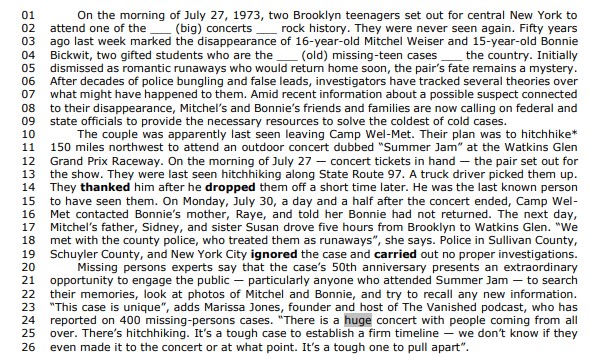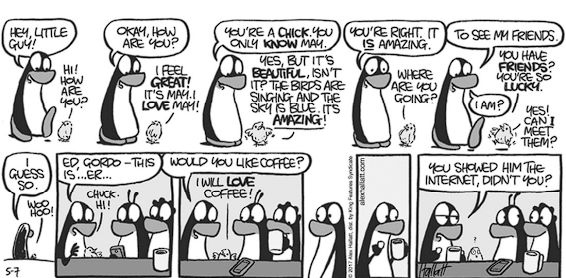Questões de Concurso
Foram encontradas 2.669 questões
Resolva questões gratuitamente!
Junte-se a mais de 4 milhões de concurseiros!


Internet: <alexhallat.com> (adapted).
Judge the following item, according to the preceding comic strip.
In the comic strip, it is possible to find examples of
sentences in the present, past and future tenses.
Based on the vocabulary and linguistic aspects of text CB1A2-I, judge the following item.
Graduate students are people studying for a master’s degree
or doctorate.
Based on the vocabulary and linguistic aspects of text CB1A2-I, judge the following item.
The word “physicists” means “medical doctors”.
Based on the vocabulary and linguistic aspects of text CB1A2-I, judge the following item.
The word “installment” (first sentence of the first paragraph)
means, in the context of text CB1A2-I, “to make it ready
to use”.